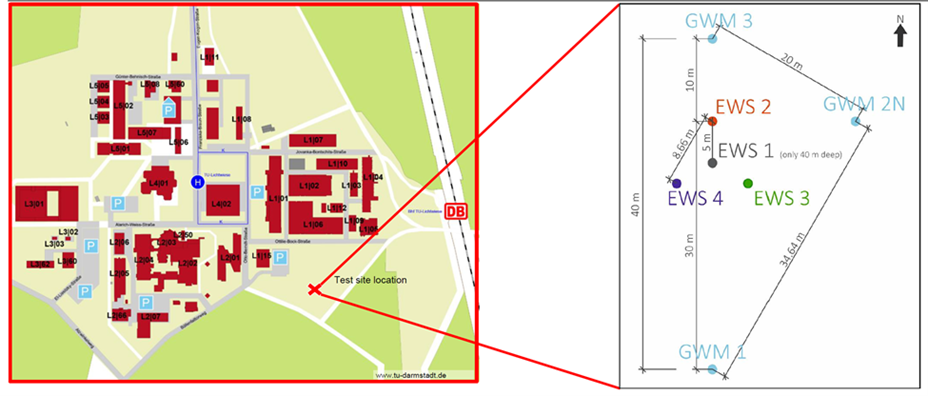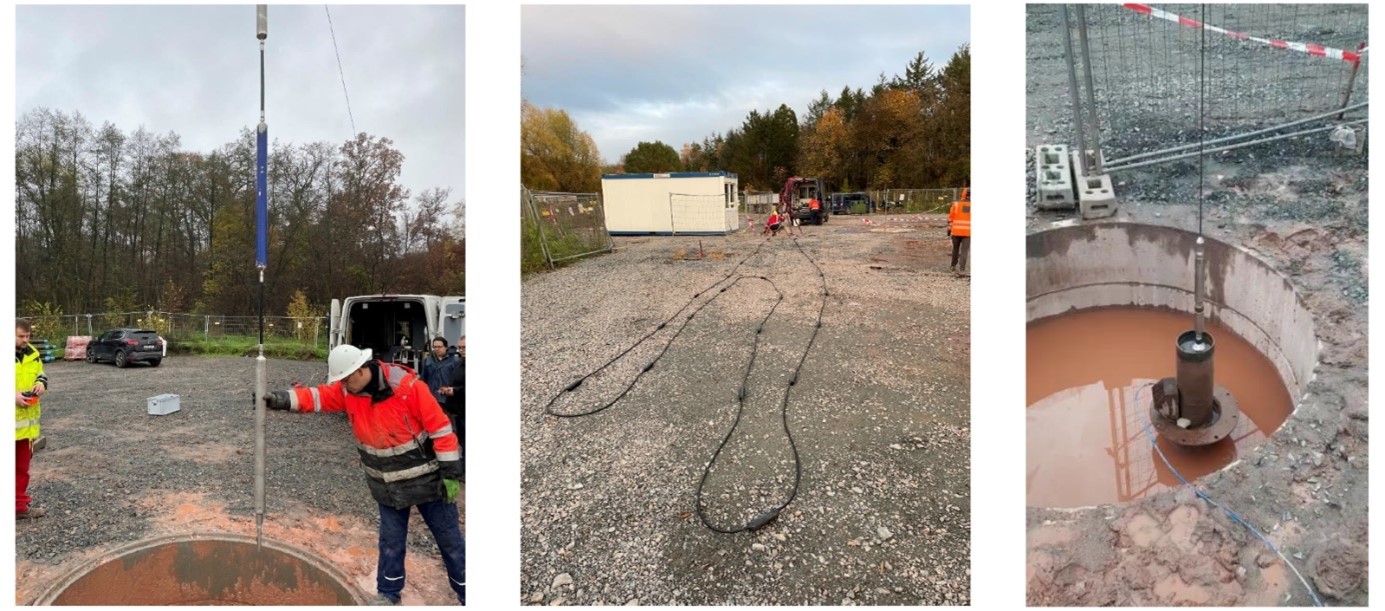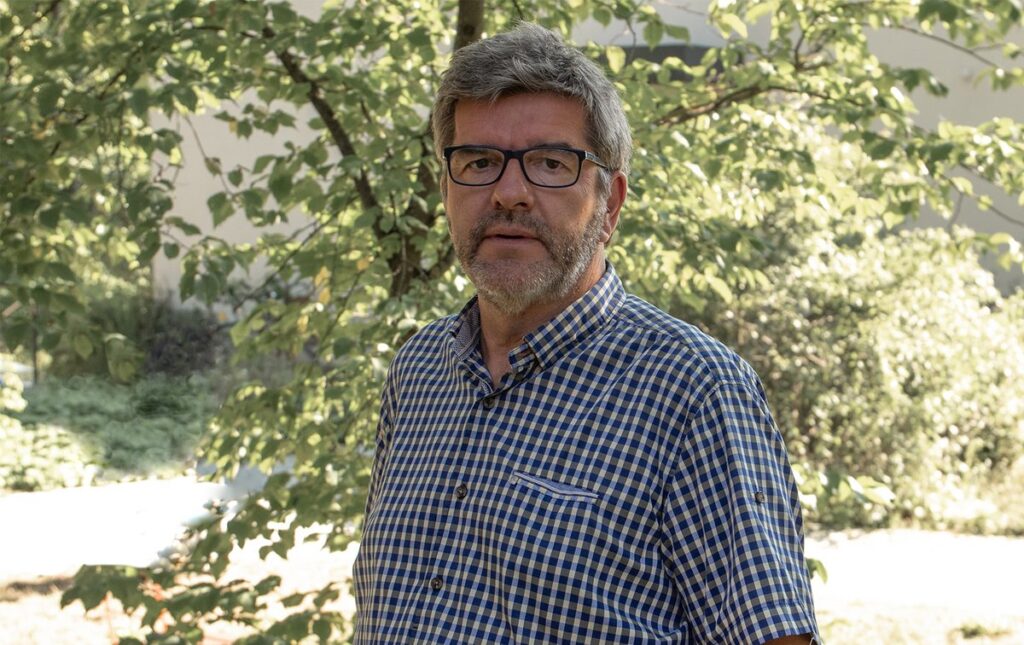Darmstadt (Germany)
Demo site for Borehole Thermal Energy Storage (BTES).
In Darmstadt, we will integrate a medium-depth Borehole Thermal Energy Storage (BTES) into the surface district heating grid at the Lichtwiese Campus of TU Darmstadt. The BTES consists of three 750-meter-deep geothermal borehole heat exchangers and is the world’s first demonstration of this heat storage technology. We aim to do the following:
- Implement, develop, and test the ability of BTES to store and recover heat, in a crystalline medium deep environment.
- Demonstrate the feasibility of this heat storage system.
- Enable joint decision-making of citizens, regulators and operators to increase social acceptance.

Project details
- Location: Campus Lichtwiese, TU Darmstadt
- Energy infrastructure:
- Local heating grid of Campus Lichtwiese.
- A total of 155,000 m² of heated floor area on campus are supplied with 22.6 GWh/a of heat and 8 GWh/a of cooling.
- The grid is supplied by a central cogeneration heat and power plant on Campus Lichtwiese and is connected to a public district heating grid. The central plant provides heat and electricity to the university with three CHP units with a thermal power of 2 MW each and an additional one with a power of 3 MW. The units are operated to meet the campus’ power demand and the residual thermal demand is satisfied by six gas peak boilers with 9.3 MW each. In contrast to the heating grid, which supplies the whole university, the cooling grid only supplies campus Lichtwiese by an absorption chiller of 1 MW, cooling.
- BTES heat sources:
- Cogeneration heat and power plant.
- Supercomputer waste heat.
- Solar panels from 2025 onwards.
- Objectives of the demo site:
- Store heat surplus in summer and excess heat from the district heating backloop grid, from the supercomputer and from solar panels installed in the campus.
- Reduce CO2 emissions and heating costs and optimise renewable heat on the campus.
- Achieve storage capacity of 270 kW e.g., 20 TJ per year.
- Status:
- Three boreholes, and three monitoring wells were drilled in 2022 with success, with associated geophysical logging (data available upon request)
- e-GRT and completion finalised by the end of the summer 2023.
- A geophysical dataset including cross-hole measurements seismic tomography (an imaging technique to gain geological information of the subsurface between the boreholes) was performed between October 2022 and March 2023 (see pictures below).
- Beginning of the test phase around the three wells is planned for a duration of 1.5 year from summer 2023, with load and unload of the three boreholes.
- Connection to the district heating grid foreseen for 2025.

Integration
We aim to integrate the three medium-deep borehole heat exchangers into the district heating grid of the campus. This district heating grid is independent of the city grid and is decomposed into sub-networks.
Several scenarios are investigated in cooperation with construction management services of TU Darmstadt to implement the most useful integration.
A first scenario investigated would be to connect the three boreholes with two new buildings and their district heating grids constructed close to the storage site. The heat storage system can supply heat during peak heat demand of the two buildings.
Another scenario considered is to investigate the possibility of extending the BTES field and connect it to a larger sub-grid, which would then contain the two new buildings plus the Engineering department building.

- Ingo Sass
- Prof. Dr., Full Professor for Geothermal Science and Technology, Technical University of Darmstadt
- sass@geo.tu-darmstadt.de
- www.geo.tu-darmstadt.de
Bochum (DE)
Demo site for Mine Thermal Energy Storage (MTES).
Delft (NL)
Demo site for Aquifer Thermal Energy Storage (ATES).
Darmstadt (DE)
Demo site for Borehole Thermal Energy Storage (BTES).
Berlin (DE)
Follower site for Aquifer Thermal Energy Storage (ATES).
United Downs (UK)
Follower site for Mine Thermal Energy Storage (MTES).
Litoměřice (CZ)
Follower site for Borehole Thermal Energy Storage (BTES)

PUSH-IT is a project funded by the European Union’s Horizon Europe research and innovation programme under grant agreement No 101096566.
Funded by the European Union. Views and opinions expressed are however those of the author(s) only and do not necessarily reflect those of the European Union. Neither the European Union nor the granting authority can be held responsible for them.
